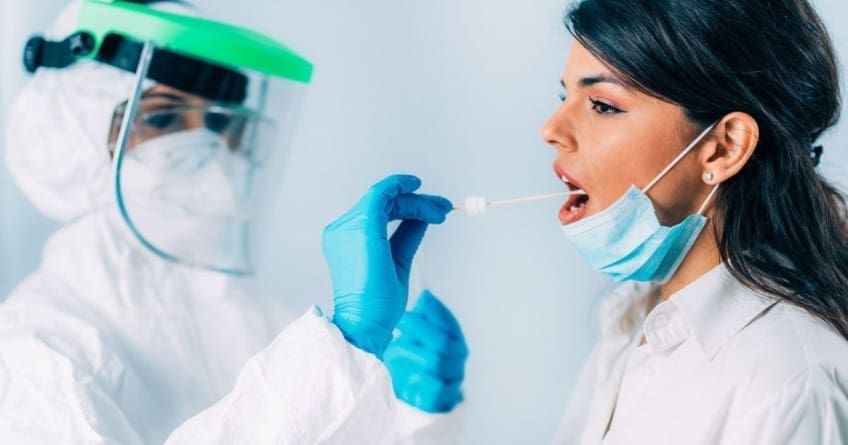
Despite the years since COVID-19 was identified, it remains a contagious virus. If you have or suspect you have COVID-19, you may want to get tested. It’s important to know whether you have tested positive so that you can care for your symptoms and protect those in your household and community.
Types of tests
COVID-19 tests help find out if you are currently sick with the virus that causes COVID-19. These tests use a sample from your nose or mouth.
There are two main kinds of tests that check for the virus:
1. NAATs (Nucleic Acid Amplification Tests)
This type includes PCR tests, which are very good at finding the virus. They are often called the “gold standard” of COVID-19 tests because they are the most accurate.
A healthcare worker usually collects your sample and sends it to a lab. It might take up to 3 days to get your results. Some places can do this test faster, right where you take it.
2. Antigen Tests
These are often called rapid tests because they give results in about 15 to 30 minutes. They work well when the result is positive, but they might miss the virus if you don’t have symptoms.
Because of this, if you feel sick and your antigen test is negative, the FDA recommends taking 2 tests, 48 hours apart. If you don’t have symptoms, take 3 tests, each 48 hours apart. You can also take a NAAT (like a PCR test) to double-check your results.
At-Home Tests
At-home tests are antigen tests you can do yourself. Always read the instructions carefully and follow them step by step.
When You Get Tested
- Pick the right kind of test for your situation.
- If you use an antigen test (like a rapid test), make sure to follow the instructions from the FDA and the test company.
- If you don’t follow the directions, your test results might not be correct.
Health equity in COVID-19 testing
Social determinants of health may influence access to testing. For example, travel time may limit access to, and use of, testing services for those who have limited access to transportation and who live in areas with fewer public transit services and schedules.
Racial and ethnic disparities in test site distribution have been found.3 Other factors that may affect both access to, and use of, testing services include:
- Lack of health insurance
- Concern about the costs or co-pays
- Occupational factors such as not being able to take time off work and lack of paid leave
- Lack of accessible options for people with disabilities, and
Delays in testing may also delay seeking care and treatment (when sick) as well as delays in self-isolation that could reduce the spread of the virus to others.
The Centers for Disease Control and Prevention (CDC) has implemented a COVID-19 Response Health Equity Strategy to reduce the disproportionate burden of COVID-19 among people in some racial and ethnic minority groups, people with disabilities, and other population groups (e.g., essential and frontline workers, people living in rural or frontier areas) who have experienced a disproportionate burden of COVID-19. One component to move towards greater health equity is ensuring availability of resources, including access to testing for populations who have experienced longstanding, systemic health, and social inequities.
What is an antibody test?
The antibody test (also called a serology test) checks your blood for antibodies to the virus that causes COVID-19. Your immune system makes antibodies to help fight harmful viruses and bacteria. They are produced a few days or weeks after you are infected. Different antibodies are produced to fight different infections.
If antibodies are detected in your blood, it could mean that you currently have COVID-19 or that you have had COVID-19 recently. But a positive antibody test could mean that you were infected with a different coronavirus in the past. This is why antibody tests are not used to diagnose a current COVID-19 infection.
A negative antibody test means that it is likely you have not had COVID-19 in the past. It could also mean that you are currently infected with COVID-19 but haven’t started producing antibodies yet.
Researchers do not know yet whether people who have been infected with COVID-19 have any immunity to the virus or for how long. Regardless of your test results, you should continue to take steps to protect yourself and others from the coronavirus.
Questions for your doctor
- Do I need to take a COVID-19 test if I feel sick?
- Are at-home tests just as effective as those performed at clinics?
- Can I use a test after it has expired?
- What if I can’t afford a test? How can I get one for free?
- Since there’s no cure for COVID-19, why do I need to test?
- Will the at-home test have directions for testing?
Resources
Centers for Disease Control and Prevention: Testing for COVID-19
U.S. Department of Health and Human Services: Coronavirus (COVID-19) Testing
![]()
Copyright © American Academy of Family Physicians
This information provides a general overview and may not apply to everyone. Talk to your family doctor to find out if this information applies to you and to get more information on this subject.







